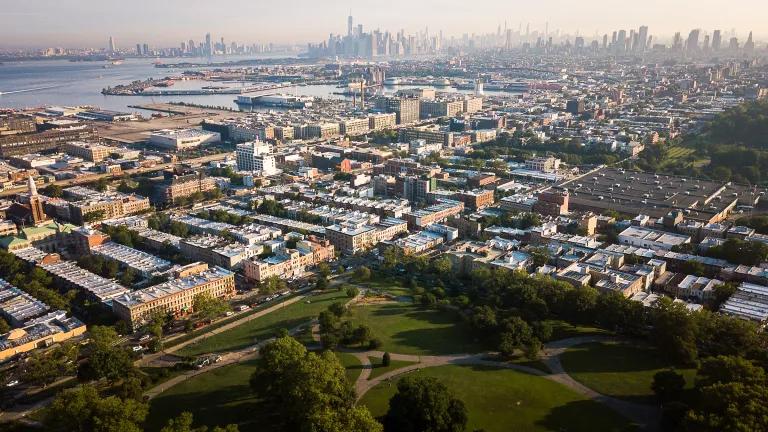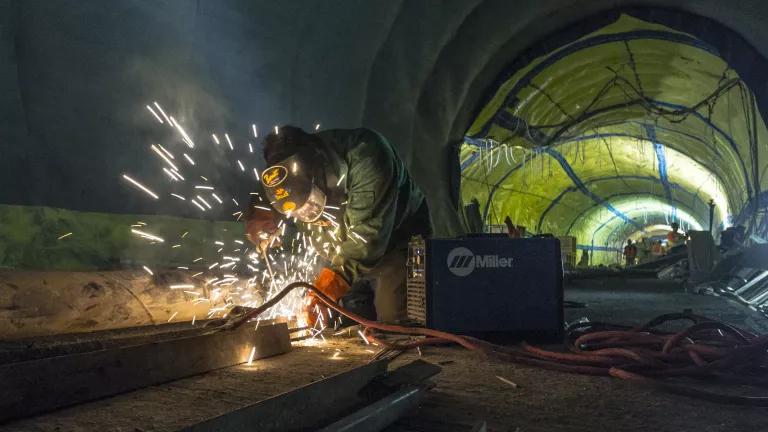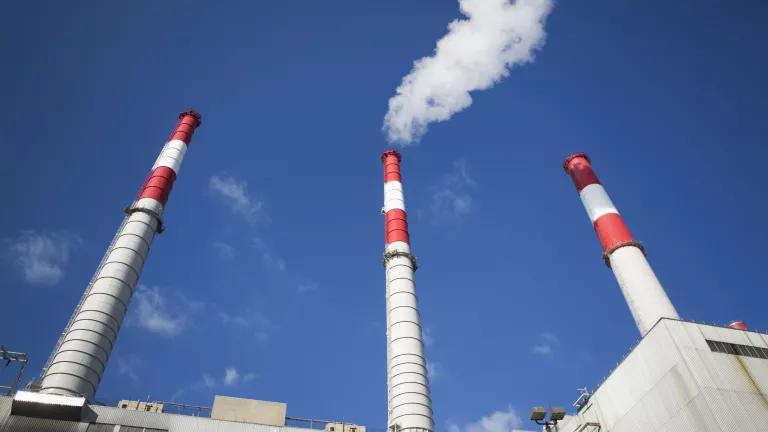Cuomo sets national model for power plant pollution reduction by committing to strengthen RGGI
Yesterday, New York Governor Andrew Cuomo took a bold step, a nation-leading step, in his State of the State address by committing not only to better prepare our state for climate impacts, but to address the source of the problem with more ambitious pollution limits under the Regional Greenhouse Gas Initiative. “We must lower the RGGI emission cap and let’s make a real difference on climate change,” he said.
RGGI is a 9-state program designed by a bipartisan group of Northeastern and Mid-Atlantic governors to create jobs, save money on electric bills for consumers, and increase economic growth and competitiveness. RGGI does all this by cutting the climate change pollution that’s turbocharging our weather and helping create Superstorms like Sandy. As the Governor wrote in NY Rising – the plan that accompanied his speech: “Through its participation in RGGI, New York has demonstrated that environmental progress can also bring economic prosperity.”
How is that possible? Simple. Under RGGI, we reduce pollution by investing less in dirty coal plants and more in energy efficiency. We send fewer of our energy dollars out of state to import fossil fuels, and keep more of that money in our local economy, paying plumbers, electricians, building contractors and construction workers to make our homes, offices and factories more efficient. The more efficient we become, the less money we waste on energy that literally flies out the window.
More jobs, less waste, lower energy bills—what’s not to like? It’s a virtuous cycle, and a model for the nation.
In fact, since RGGI took effect in 2009, it has spurred almost $400 million in economic growth in New York State alone, creating 4,600 jobs. That’s all on top of helping to bring the state’s power plant pollution down by 45 percent.
Why is Governor Cuomo’s support of ambitious pollution reduction goals so important now? Two reasons:
1. RGGI Review. As part of a scheduled review process, the RGGI states are considering a host of options to strengthen the program. Governor Cuomo is committing to the most ambitious of these, and the only one that actually reduces pollution from current levels. Many of the region’s utilities support this package of upgrades because they have business models that thrive in the emerging clean energy economy. They, too, want RGGI to serve as a national model. After all, reducing pollution in smart ways is not just good for our country, it’s good for business.
Of course, there is opposition. If you only sell fossil fuels or you’ve pinned all your hopes on dirty coal plants that are 60 years old, your business model doesn’t fare so well in the 21st Century. So the usual suspects, funded by the fossil-fuel industry, are again out in force, decrying RGGI as the end of western civilization. “Higher prices!” they cry. “It’s a tax!” “Businesses will flee to neighboring states!” They’d like to abolish RGGI, or at least have the states choose a proposal that would actually allow pollution levels to rise. You have to feel a little sorry for these guys, who are constantly forced to confront the annoying facts: pollution is down, electricity bills are down, jobs are up. Thank goodness Governor Cuomo is a fact-based kind of guy.
2. Federal pollution standards are on the horizon. RGGI’s success is particularly significant at this moment because, under the Clean Air Act, EPA is legally obligated to issue carbon pollution standards for existing power plants. Once these standards are in place, states will need to develop and implement plans to meet them. NRDC has developed and analyzed a specific proposal for EPA and other stakeholders to consider. It builds on the virtuous cycle that the RGGI states have developed: creating jobs by reducing pollution and investing in energy efficiency. It would give states broad flexibility to meet the standards in cost-effective ways, including through RGGI or similar initiatives. Our analysis shows this approach would deliver huge economic benefits across the country and create hundreds of thousands of jobs. That’s because it takes a lot more people to deliver energy efficiency (all those building contractors) than to generate electricity (burning rocks in a giant furnace doesn’t take a lot of manpower). The Northeast and Mid-Atlantic states are demonstrating in real life that we can create jobs actually reducing pollution, and giving the lie to EPA’s opponents (funded by – you guessed it – the fossil fuel industry) who also like to speculate about the end of western civilization.
We’re lucky in New York to have a governor who understands that leading on clean energy solutions like RGGI strengthens our state by cutting pollution, creating jobs, saving consumers money, cleaning the air our kids breathe, and attacking the source of pollution that fuels Superstorms like Sandy.
In his speech, Governor Cuomo told New Yorkers, “the first thing we have to learn is to accept the fact that climate change is real.” Then, he promised we would “build back better and smarter than ever before.” By committing to ambitious RGGI pollution reductions, the Governor is going a long way toward leading the nation in doing just that.



